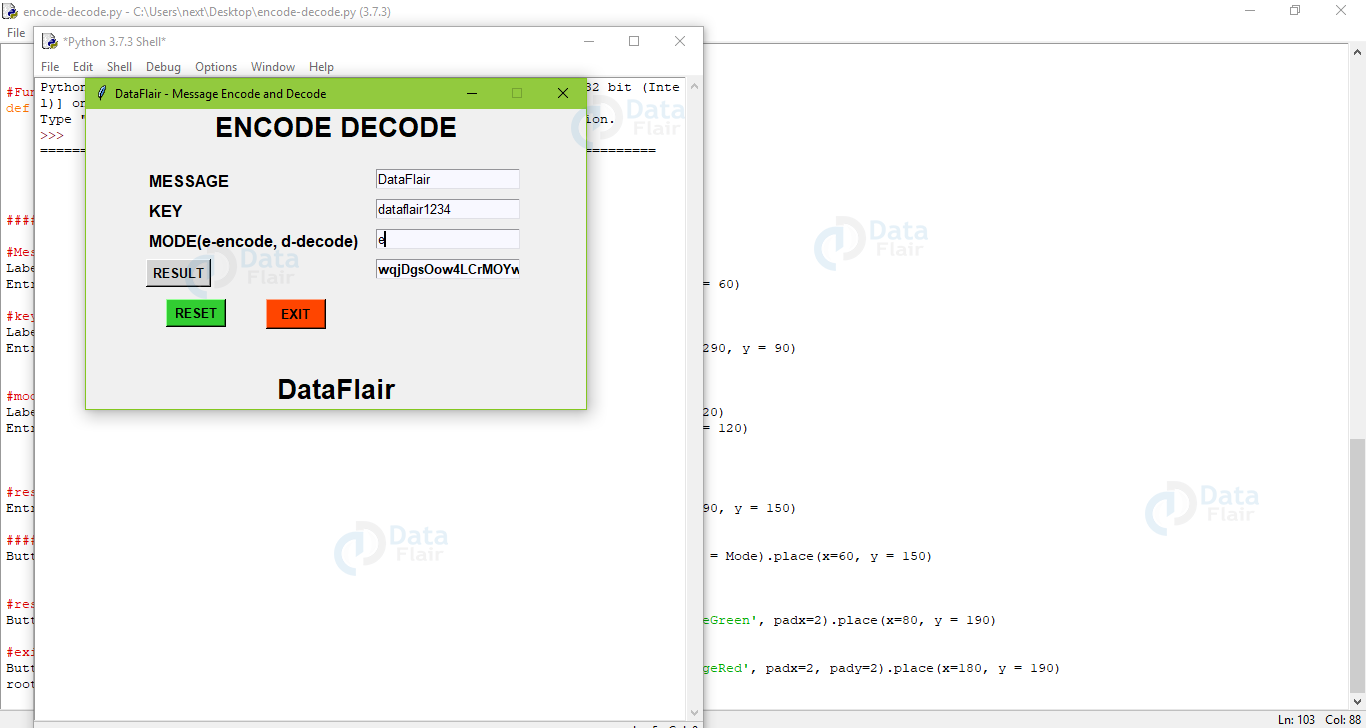

- CHANGE TEXT ENCODING DECODE HOW TO
- CHANGE TEXT ENCODING DECODE WINDOWS 10
- CHANGE TEXT ENCODING DECODE CODE
- CHANGE TEXT ENCODING DECODE WINDOWS
Problem solved, right? Well, no, not really. They match up, and the text displays correctly.
CHANGE TEXT ENCODING DECODE WINDOWS
The default encoding on my own Windows machine turns out to also be the 1252 encoding (as highlighted above in red), so I’m instructing my StreamReader to use the 1252 encoding when reading a file which has been encoded as “ANSI” (also known as 1252).
CHANGE TEXT ENCODING DECODE CODE
This makes sense – the text file with my team names was saved with “ANSI” encoding, which we know actually corresponds Windows Code 2. Default)Īnd now my names are now correctly rendered in the Console, as shown in the image below. var streamReader = new StreamReader(myTeamNamesFile, Encoding. NET Framework console application, as shown in the code snippet below. So let’s say I use Encoding.Default in my. I’ve highlighted the values for “ Encoding.Default“, because this is a special case. I’ve listed the values below, and notice that the Encoding.Default is different depending on whether you use the. var streamReader = new StreamReader(myTeamNamesFile, encodingType)īut what values do these encoding types resolve to? Well that depends on whether I use the. I can use an overload where I specify the encoding type, which comes from. This time when I run the code above, the names are displayed correctly on the console, as shown below.Īlternatively, try using the StreamReader overload to specify the encoding type. This is very straightforward – I’ve chosen to just select the UTF-8 option from the dropdown list in NotePad’s ‘Save As…’ dialog box. There are a couple of different options open to me here: Change the file’s encoding type and save it with a specified encoding – e.g. “ANSI applications” are usually a reference to non-Unicode or code page–based applications.”

The source of this comes from the fact that the Windows code page 1252 was originally based on an ANSI draft-which became International Organization for Standardization (ISO) Standard 8859-1. “The term “ANSI” as used to signify Windows code pages is a historical reference, but is nowadays a misnomer that continues to persist in the Windows community. Interestingly, this doesn’t mean that I’ve saved the file as ANSI – this is a misnomer. But as I mentioned earlier, I know I saved this file with the encoding type ANSI selected from the dropdown list in Notepad. It turns out detecting the file’s encoding type is quite a difficult thing to do in. NET?īig thanks to Erich Brunner for pointing out a new bit of information to me about the default encoding type – I’ve updated this post to reflect his helpful steer. Can you detect the file’s encoding type with. NET Framework console application is that my StreamReader is assuming that my file is encoded one way when it’s actually encoded in another way, and it doesn’t know what to do with some characters, so it uses a question mark as a default. It’s pretty obvious that the question marks relate to the non-ASCII characters, and each name on my list have either an accent or a grave, or an umlaut/diaeresis. What’s gone wrong? The StreamReader object and original text file need to have compatible encoding types I expected to see my team’s names written to the console – but instead all those names now have question marks scattered throughout them, as shown in the image below. WriteLine( "The file could not be read:") īut when I run the code, there’s a problem. Read the stream to a string, and write the string to the console. So I’ve written a spike of code to use a StreamReader – I’ve more or less copied directly from the link above – and it looks like this: using System Ĭonst string myTeamNamesFile = using ( var streamReader = new StreamReader(myTeamNamesFile))

CHANGE TEXT ENCODING DECODE HOW TO
NET Framework StreamReader – there’s a simple and clear example on the site describing how to do this. I’m going to read names from this text file using a. I saved the file with the default ANSI encoding.
CHANGE TEXT ENCODING DECODE WINDOWS 10
I created the text file on Windows 10 machine and used Notepad. The file is pretty simple – it’s called MyTeamNames.txt and it contains the following names: I’ve got a list of my team members in a text file which I need to parse and process in.


 0 kommentar(er)
0 kommentar(er)
